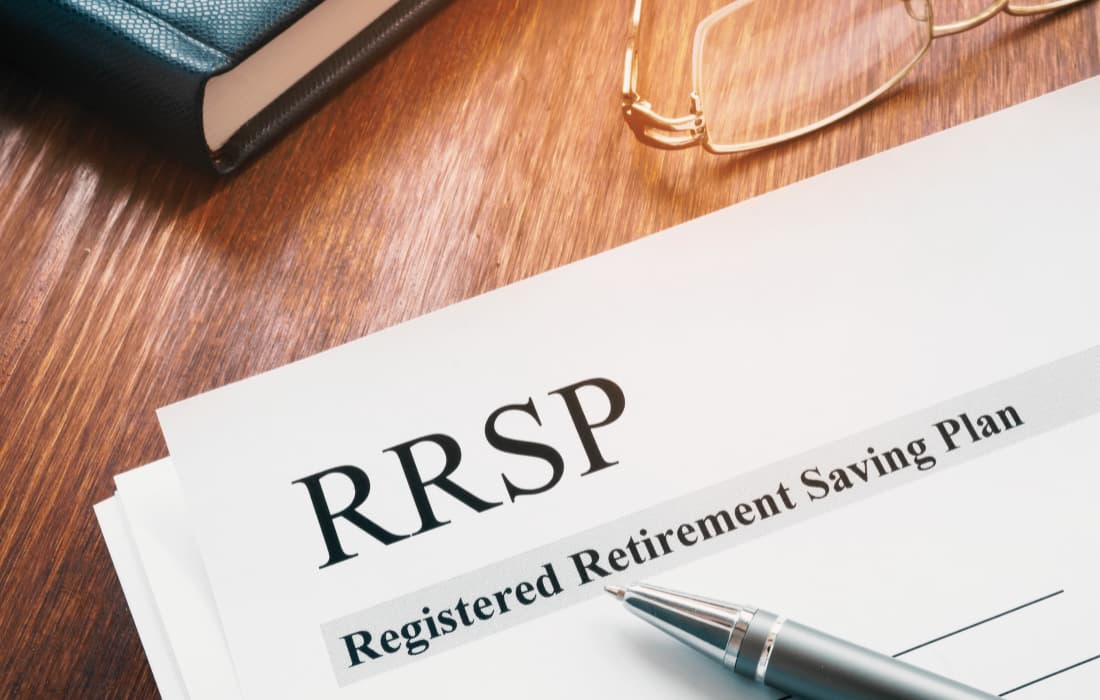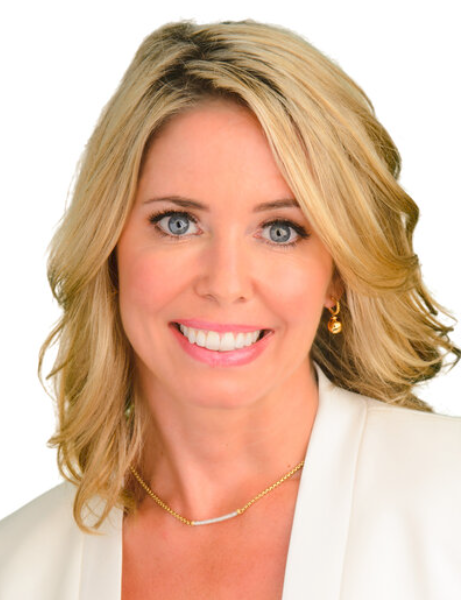Becoming Rich in Canada
Wondering how to be rich in Canada? While nearly every Canadian likes the idea of becoming rich, whether or not you achieve this goal depends on many factors, including how much you earn and save as well as your money mindset. In this post, I’ll cover some of the most important strategies of wealth-building that apply to all Canadians.
Written By Tiffany Woodfield, Financial Coach, TEP®, CRPC®, CIM®
Now, let’s get into it! We’re going to cover income building, investing tools, saving, and budgeting so you can start planning how you’re going to become rich in Canada!
For a deeper dive on how to become rich anywhere in the world, I’ve written an extensive post that covers every aspect of this topic, which you can read here –> How to Become Rich.

Which careers or industries in Canada offer the best potential for high income?
The Canadian economy’s top industries are real estate, manufacturing, and mining.
A significant portion of the GDP in Canada is from international trade from imports and exports. Canada’s main trading partners are the US, China and the UK. So you might think these are the best industries. However, statistics show the top paying jobs are surgeon, dentist, lawyer, engineer, IT, and physician.
If these aren’t your specialty, being a successful business owner is another opportunity.
Of course, the downside is that it takes money to make money, and you don’t have security. The upside is that, in Canada, a small business owner has tax planning opportunities which allow them to keep more money in their pocket.

What are the best investment options in Canada?
The best investment options depend on what you are looking for, your age and your risk tolerance.
Understanding your wealth-building goals and aligning your investment strategy with them is essential. Think of the long-term with your investments and avoid trying to “time the market.”
Some standard investment tools are as follows:
GIC
A Guaranteed Investment Certificate is an option to park money for a set time frame if you have a low risk tolerance and don’t need inflation protection.
Stocks
When you purchase stocks, you are buying a portion of ownership in the company and participating in its success. Stocks generally have more market fluctuations with more significant upside potential.
When purchasing stocks, you must understand your risk tolerance and purchase the company’s stocks accordingly. Smaller companies will be at greater risk, and larger, established companies will have lower risk.
Bonds
A bond is generally a lower-risk option if you purchase high-quality bonds from the government or established companies.
A bond is similar to a loan, where the government or company pays a set interest rate with a promise to repay the amount you loaned in full at a future date. You can purchase bonds directly. They also trade on the market.
HISA
A high-interest savings account is good for short-term money and pays interest, which protects you from the full brunt of inflation.
Mutual Fund
A mutual fund is a professionally managed pool of stocks or bonds where you can participate in several companies simultaneously and have a manager watch it for you.
Each mutual fund has a set mandate, such as investing in large companies, small companies, foreign markets, bonds, or a mixture. The prices are calculated at the end of the day, and mutual funds are not traded on the market unless it is a close-ended mutual fund. In Canada, Tangerine offers relatively low-cost mutual funds.
Meanwhile, robo-advisor companies like Wealth Simple allow you to have a portfolio customized to your risk tolerance and goals without being invested in mutual funds. This can be beneficial for Canadians who are at the start of their wealth-building stage and don’t have sufficient assets to work directly with a portfolio manager.
ETF
An ETF is similar to a mutual fund in that it has a set mandate but is valued in real time while markets are open. So, it trades on the market like a stock.

How should I use RRSPs and TFSAs for wealth building?
RRSPs are a retirement savings tool registered with the Canadian government that you can contribute to, provided you follow specific rules.
It allows you to defer paying taxes on the money you contribute. Instead, you pay the taxes when you take the money out.
The principle is based on you contributing to an RRSP when you are in a high-income tax bracket and taking the money out in retirement. The assumption is that you take the money out when you are in a lower-income tax bracket.
Some clients have told me, “I don’t believe in RRSPs.”
This statement is a red flag highlighting that they don’t understand how an RRSP works.
Think of an RRSP as an empty bucket. There are rules to how much you can contribute based on your income level and situation. You will get a tax break when you contribute and pay the tax later when you take the money out of your RRSP bucket.
If invested properly, the money invested in the RRSP will grow, and you won’t be taxed on this until you take the money out. Inside your RRSP bucket, you can invest in various investment tools such as stocks, bonds, mutual funds or ETFs. The main thing to remember is that using an RRSP helps you save tax today but creates a future tax liability. (+)
But what is a Tax-Free Savings Account? And is it really tax free!?
A Tax-Free Savings Account (TFSA) is registered with the Canadian government and allows individuals over 18 living in Canada to contribute.
The money you invest in a TFSA can grow, and the interest and capital gains are not taxed. (Capital gains refers to the profit from the sale of an investment.) You do not get a tax deduction when you contribute to a TFSA, but you also don’t get taxed when you take the money out of your TFSA.
A TFSA is an excellent tool for saving because all the money you invest in a TFSA grows tax-free.
You end up with more money in your pocket.
For example, if you invest $10,000 in a TFSA and it grows to $12,000, you can take this money out and not pay tax on it. That’s $2000 in capital gains that you don’t have to pay any tax on. If you invested the $10,000 in a regular investment account, you would be paying tax on any capital gains, dividends or interest and would have less money.
Often, people need clarification about a TFSA.
It is just a savings account. You can open it at any financial institution, but you need to know your TFSA limit by looking at the Government of Canada website. Remember, you need to understand the rules around a TFSA so you know how much you are eligible to contribute. (+)

What are effective tax strategies for increasing wealth in Canada?
People often limit their wealth potential because they don’t take the time to understand the tax strategies available to them.
If you don’t have this knowledge, work with someone who can guide you. Some tax savings strategies include investing in Canadian dividend-paying stocks, deferring capital gains, tax loss harvesting, and using RRSPs and TFSAs. You will also want to consider using corporations and trusts and taking advantage of all available deductions.
What are the key features of the Canadian economy that affect wealth building?
Canada has a high standard of living, universal health care, quality education and a strong economy.
It has become an increasingly popular destination for people to move to, particularly in prime locations. The major drawback is the high cost of real estate in these locations. In addition, Canada has a high marginal tax rate of approximately 53% in the top tax bracket in certain provinces.
Remember the benefit of universal public health care?
Public health care is funded through taxes paid by permanent residents and Canadian citizens. To build wealth, you must consider taxes and understand how to minimize taxes when possible.
It can be easy to get dejected if you’re constantly looking at where you are and where you want to be and comparing yourself to others. That’s why improving your money mindset, releasing limiting beliefs, and overcoming money blocks are important steps in wealth building.
You need to take practical steps while also improving the way you think about money.
In addition, learning to love budgeting and not thinking that it’s boring or limiting is also useful. Check out the three videos below to learn more about budgeting that feels good. Or read my full article about budgeting.
Quick Video: 5 Basic Elements of a Budget that Everyone Needs to Know
These five elements of a budget are critical to consider when you’re creating a financial plan that helps you build towards a work-optional lifestyle and financial freedom.
Quick Videos: Try Out Values-Based Budgeting!
Find out what value-based budgeting is and why it feels so much better than traditional budgeting. You need to feel good about your budget; values-based budgeting will help you with this.
What is values-based budgeting?
How can I start values-based budgeting?
Get the Free Guide and Audio Meditation for Manifesting Your Dreams
Pop your email address in the form below to get my easy checklist and guide to manifesting and the guided audio meditation to help you get started.
You’ll also get one or two emails per month with the latest blog posts about abundance, wealth-building, manifesting, and creating a fulfilling life.
Related Articles
💎 How Money Mindset Impacts Health
💎 Budgeting 101: How to Create and Follow a Simple Budget
💎 How to Stick to a Budget (Even If You’re New to Budgeting)
💎 Money Management Rules: 50 30 20, 7-Day Rule, and 20/10 Rule
About the Author

TIFFANY WOODFIELD is a financial coach, cross-border expert, and the co-founder of SWAN Wealth based out of Kelowna, BC. As a TEP and associate portfolio manager, Tiffany has extensive experience working with successful professionals who want to leave a legacy and enjoy an adventurous, work-optional lifestyle. Tiffany combines extensive knowledge from her background as a financial professional with coaching and her passion for personal development to help her clients create a unique path that allows them to live their fullest potential. Tiffany has been a regular contributor to Bloomberg TV and has been interviewed by national and international publications, including the Globe and Mail and Barron’s.